On the Research Trail: World War II Prisoners of War in Kansas
The diversity of the Spencer Research Library collections is explored through the description of a search process related to a research question or theme.
In my first months as an employee of the University of Kansas, I was curious about the history of the buildings on campus. In particular, the Danforth Chapel piqued my interest as I wondered what the connection might be between the Danforth for whom the chapel is named and the former chancellor of Washington University in St. Louis, my alma mater. I went to the University Archives page on the Spencer Research Library website and clicked on Campus Buildings to see what I could find out. I then clicked on Campus Buildings Directory.
Click image to enlarge.
This took me to the KU Places Directory page. I typed “Danforth Chapel” (without quotation marks) into the search box.
Click images to enlarge.
I was surprised to learn that German prisoners of war (POWs) from a camp in Lawrence participated in the construction of the Danforth Chapel. My research path took a turn in pursuit of answers to new questions: When was this? Where was the Lawrence POW camp located? How had POWs become involved in a campus project? What was this experience like for those involved?
Knowing that most of the buildings on campus have files in the University Archives, I started my quest for answers by using the search interface for findings aids on the Spencer website. I typed “Danforth Chapel” (without quotation marks) into the Search for field. I retrieved four results. The first item in the results list was the finding aid for the University of Kansas General Records. I clicked on this item.
Click image to enlarge.
Looking at the left side of the finding aid, I skimmed through the list of different types of general records to find and click on Buildings. In the Buildings section, I located Buildings Scrapbooks as well as Danforth Chapel.
Click image to enlarge.
Scrapbooks are collections of newspaper clippings and other relevant artifacts related to a particular topic that were gathered and organized by KU librarians up until approximately the 1960s. The scrapbooks for KU buildings are organized by date. Examining the records for a specific building first, before looking through the four volumes of scrapbooks, is useful because the files for a building often contain an index that points the researcher to the volume and page numbers of relevant items in the scrapbooks as well as to sources of other related information at Spencer.
Materials in the Danforth Chapel building file.
Call Number: RG 0/22/14. Click image to enlarge.
Pages in a KU buildings scrapbook. Call Number: SB 0/22 volume 1. Click image to enlarge.
I found an index in the Danforth Chapel box of records and looked at each page listed in the corresponding scrapbook volume. The clipped articles were about the role of the chapel, fundraising, opening ceremonies, etc., and did not answer my questions. I continued to look through the box of Danforth Chapel records which are organized by year. In the 1945 folder, I discovered photocopies of two newspaper articles about the role of German prisoners of war on campus.
Folders and newspaper articles in the Danforth Chapel building file.
Call Number: RG 0/22/14. Click images to enlarge.
One of the photocopies did not include the source information for the article. It was evident from the surrounding information on the page that it was from the KU newspaper, the University Daily Kansan (UDK), but I wanted to know the date it was published. Inferring the date range from the second photocopied article, which did have source information, I located the appropriate roll of microfilm on the UDK shelf in the Spencer Reading Room. I loaded it on the microfilm reader and found the article in the June 4, 1945, issue. I put that date in context by a quick check online to confirm that June 1945 was one month after the surrender of German forces in the European theater of World War II.
From the first article, entitled “Fifteen German Prisoners Detailed to Campus to Work on Danforth Chapel and Grounds,” I learned that the POW camp in Lawrence was located near the Santa Fe railroad station. The POWs were paid contract workers and had been brought into the area to meet labor shortages in agriculture and industry.
The second article (shown below) provided me with some insights into how the relationship between the prisoners, their guards, and the KU community was governed by a set of rules.
Article about German POWs in the University Daily Kansan,
August 5, 1945. Call Number: UA Ser 69/2/1. Click image to enlarge.
I wondered if there are items in the collections of the Spencer Research Library that might provide information about World War II prisoner of war camps in Lawrence and other parts of Kansas. I went to the Spencer website and clicked on Search KU Libraries Catalog. To search only in the Spencer Research Library holdings, I clicked on Set Other Search Limits. (Note: This is an alternative to the search method described in my previous blog post.)
Click image to enlarge.
I then selected Spencer Research Library as the Location and clicked on Set Limits.
Click image to enlarge.
In the Advanced Search interface, I typed in “prisoner of war camp Kansas” (with no quotation marks) and “prisoners of war Kansas” in two of the Search for fields. I clicked on Or in between the two fields to search for either of the two keyword phrases. (Note: You can leave out the word of when entering the keyword phrases.)
Click image to enlarge.
This search retrieved eighteen results. Since I did not specify World War II or German prisoners, some of the results were related to other wars or other groups of prisoners. Scanning through the list of items, I found six that appeared to be relevant to my research questions. The items included a curriculum for courses taught at the camps in Kansas, oral histories of prisoners and community members, and a book providing a comprehensive overview of the POW camps in Kansas at the end of World War II.
Click image to enlarge.
Pursuit of answers to my research questions was well-supported by utilization of the collections at Spencer Research Library. I found materials to address my initial questions and a wide variety of additional sources to allow for deeper investigation of the topic of POW camps in Kansas.
Stacey Wiens
Reference Specialist
Public Services
Tags: Campus, Danforth Chapel, finding aids, Lawrence KS, Online Catalog, Research tips, search strategies, Stacey Wiens, World War II

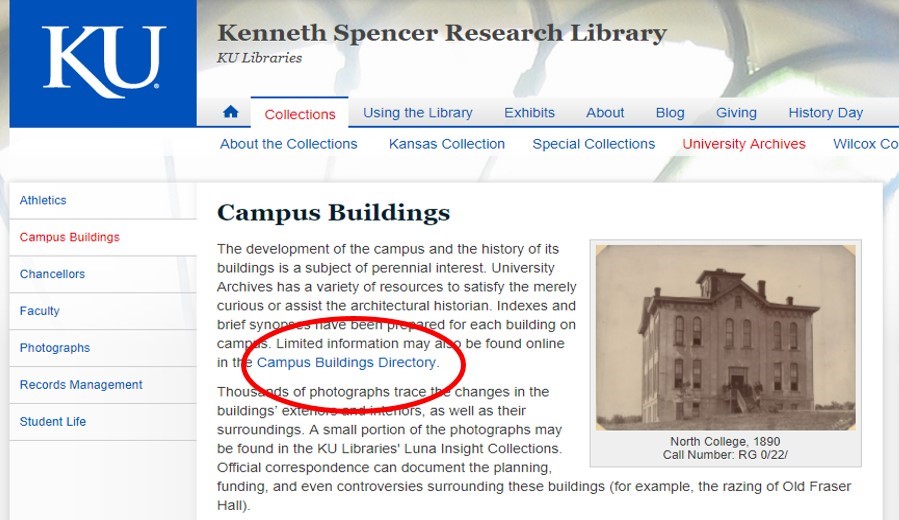
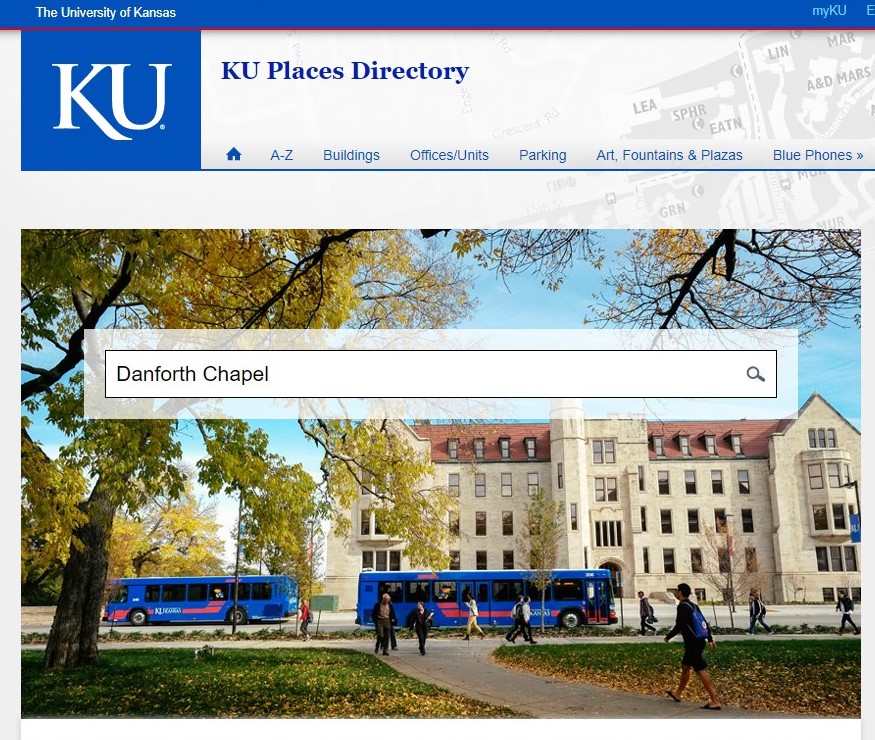
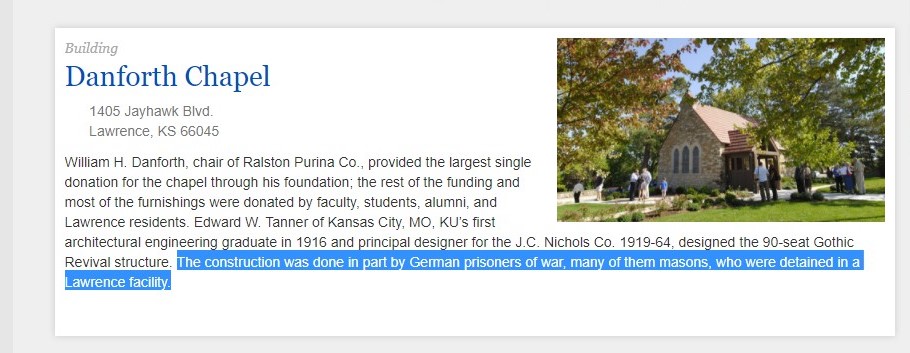
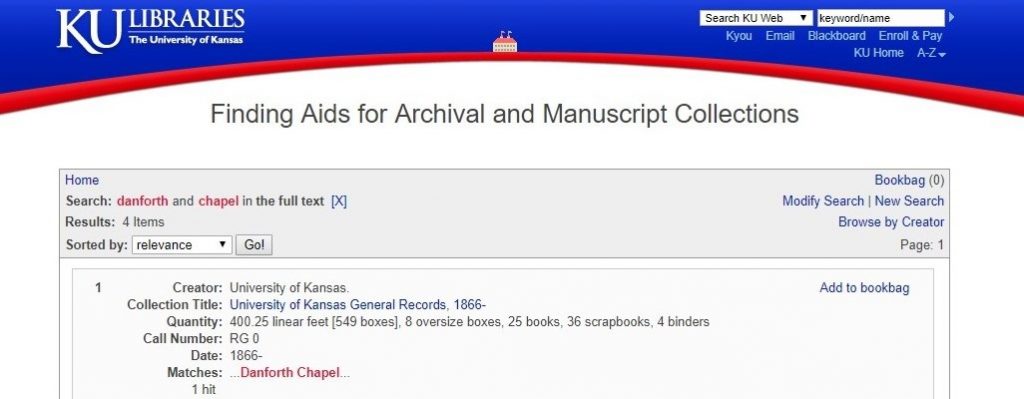
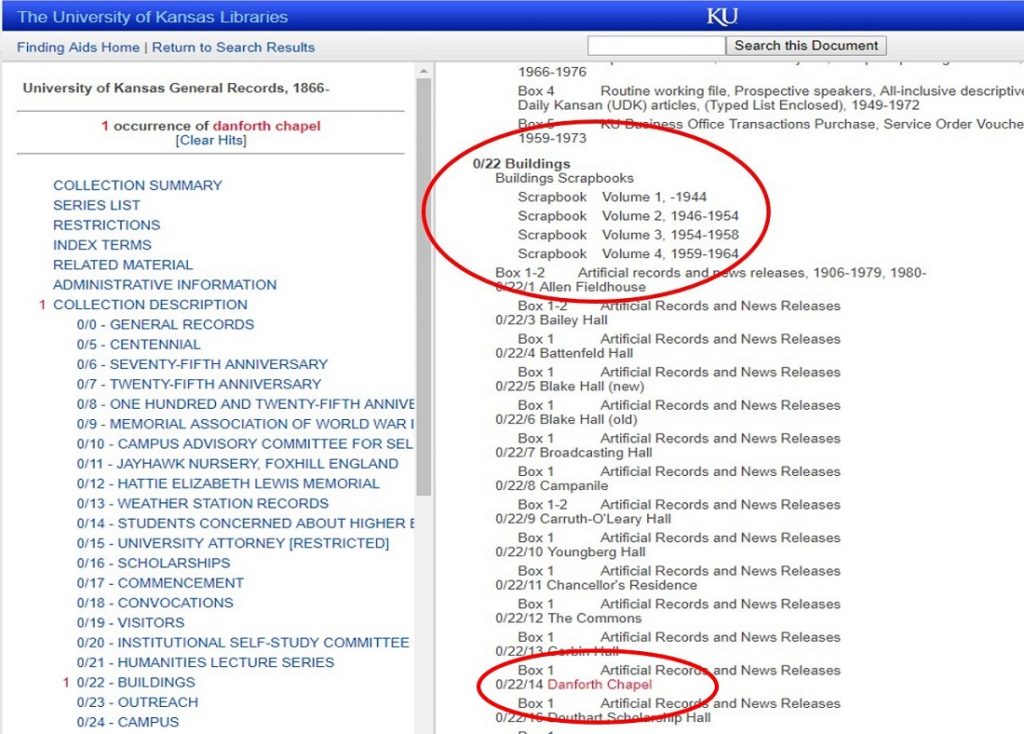
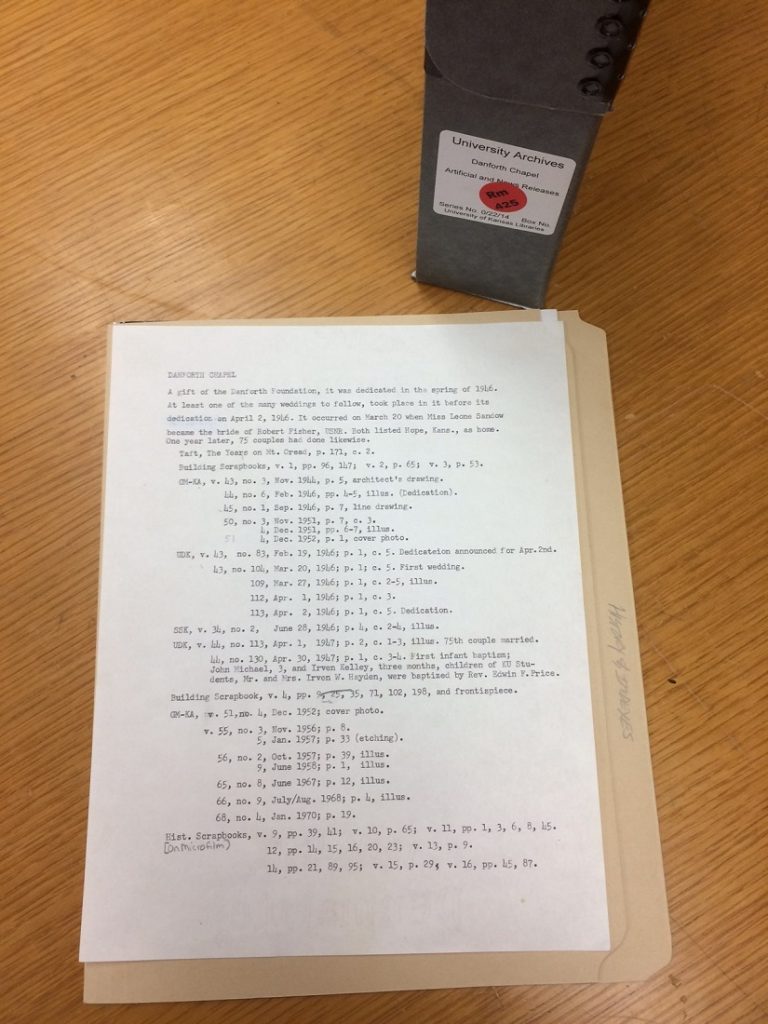
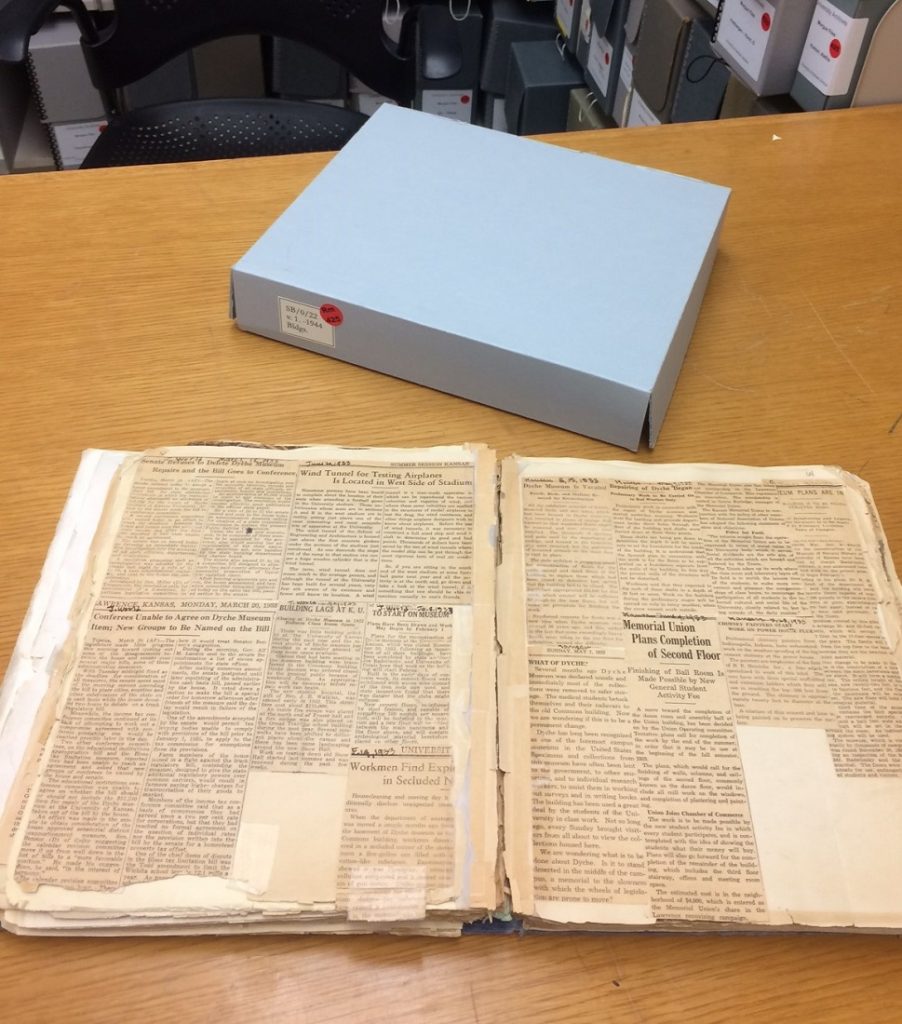
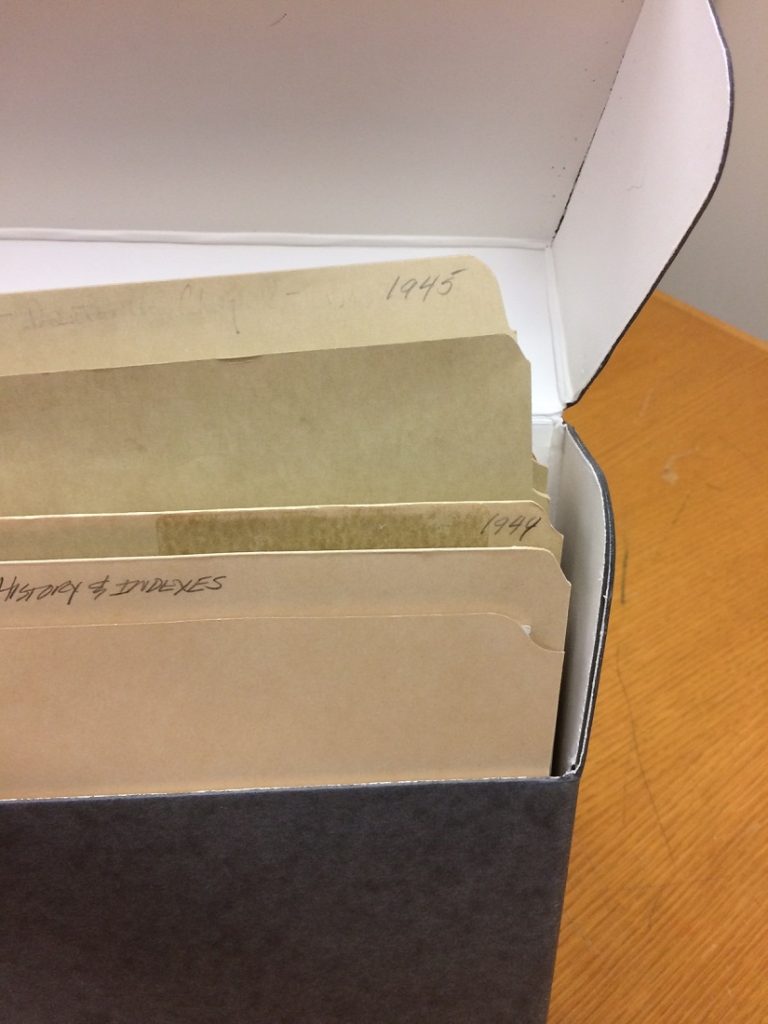
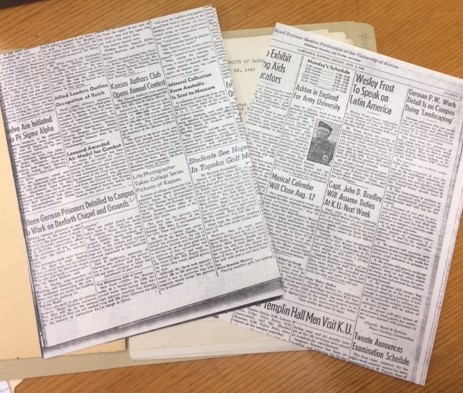
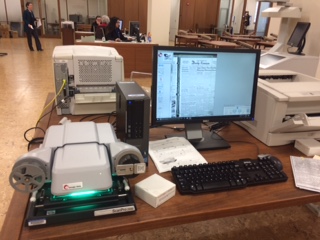

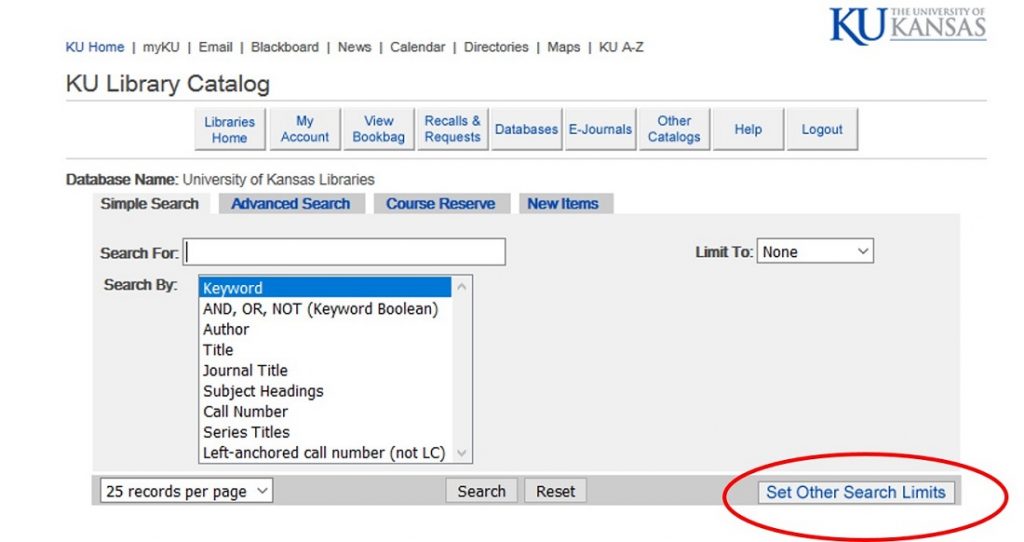

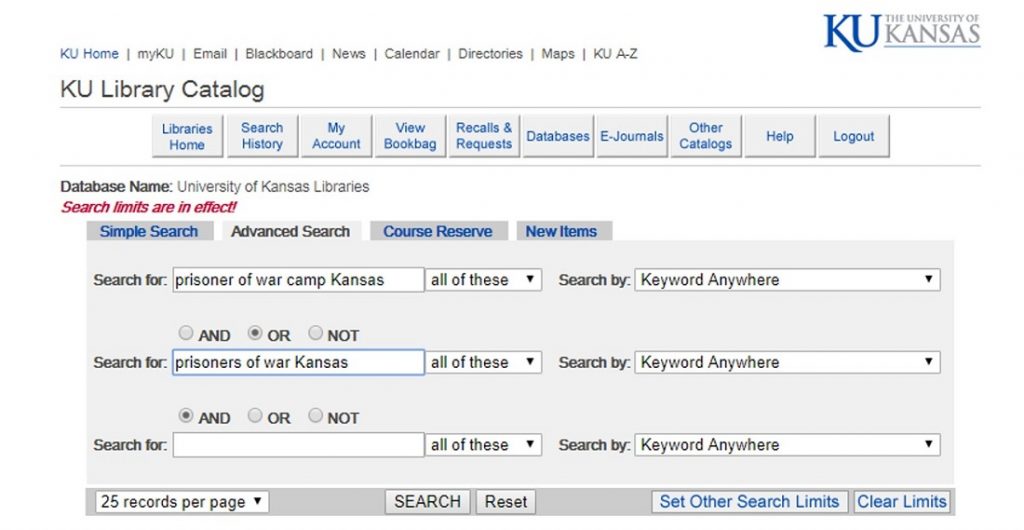

Any information on names of the POW’s there? My grandma said she picked potatoes with them and remembers one of their names and said she made friends with the guy and he “protected” her from other POW’s that were rapists.
July 2nd, 2019 at 7:35 pm